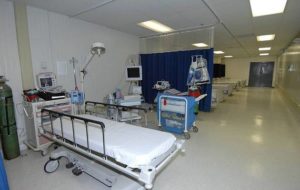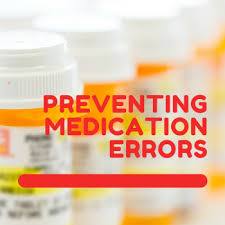DAVE CHAMBERS | 2017-05-15 06:27:28.0

File photo
Image by: Wikimedia Commons.
Hundreds of medication errors are made in children’s wards at one of the country’s leading hospitals.
Pharmacists who spent 16 weeks in the four paediatric wards at Dr George Mukhari Academic Hospital in Ga-Rankuwa, outside Pretoria, detected 663 medication errors – an average of 2.9 per patient.
The biggest category of errors involved incorrect dosing, followed by omission of medication and medicine being given at the wrong time. A total of 106 errors were made in the hospital’s 55-bed neonatal intensive care unit.
In one in three patients the error resulted in “some level of harm”, said pharmacists who conducted the research, reported in the SA Journal of Child Health. But none suffered permanent harm or died.
Recommendations by lead researcher Archele Truter, from the pharmacy department at Sefako Makgatho Health Sciences University adjoining the hospital, include assigning a pharmacist to the paediatric wards, improving training for doctors and nurses and introducing a digital database of medication errors.
Truter and colleagues Natalie Schellack and Johanna Meyer had to intervene to prevent some errors during their observations.
“Examples.included the doctor being asked to change the high dose of 1g paracetamol prescribed for a two-year-old to the recom-mended 180mg and the nurse being stopped before administering 12 drops of tilidine to a one-year-old instead of two drops as prescribed.”
And Truter said because her team could not observe the wards around the clock – they worked for up to seven hours a day, five days a week – many errors probably went undetected.
The mistakes were equally split between prescribing doctors (47%) and administering nurses (51%). Only 2% were due to the pharmacy.
Anti-infective drugs – including antibiotics, antifungals and antivirals – accounted for 43% of errors and painkillers for 25%.
“The paediatric orthopaedic ward had the highest risk for medication errors. Reasons for this included the high number of analgesics prescribed for post-operative pain relief,” said Truter.
She said the error rate at George Mukhari was higher than that reported in similar studies elsewhere. Global research had found that the presence of clinical pharmacists in paediatric wards could cut the number of errors in half.
MANY A SLIP
Examples of medication errors reported by the academics include:
Nurse forgot to order antibiotics;
Drip not inserted so patient did not get medication;
Medication given at 2pm instead of 10am;
Antibiotic given eight-hourly instead of six-hourly;
Medicine mixed with tap water instead of sterile water; and
One needle used to reconstitute all intravenous medication for the ward.
http://www.timeslive.co.za/thetimes/2017/05/15/Medication-errors-Kids-at-mercy-of-hospital-dopes1

